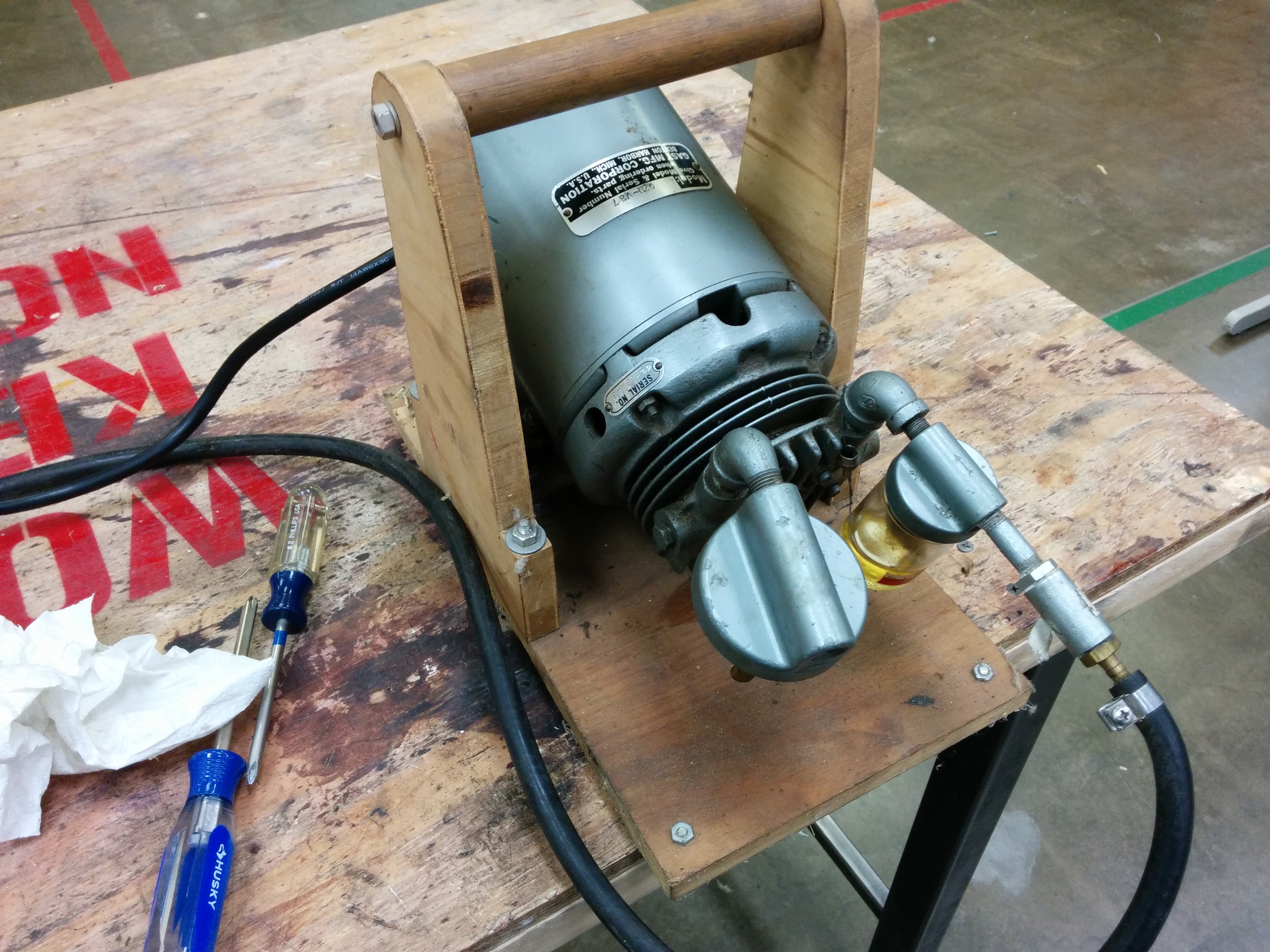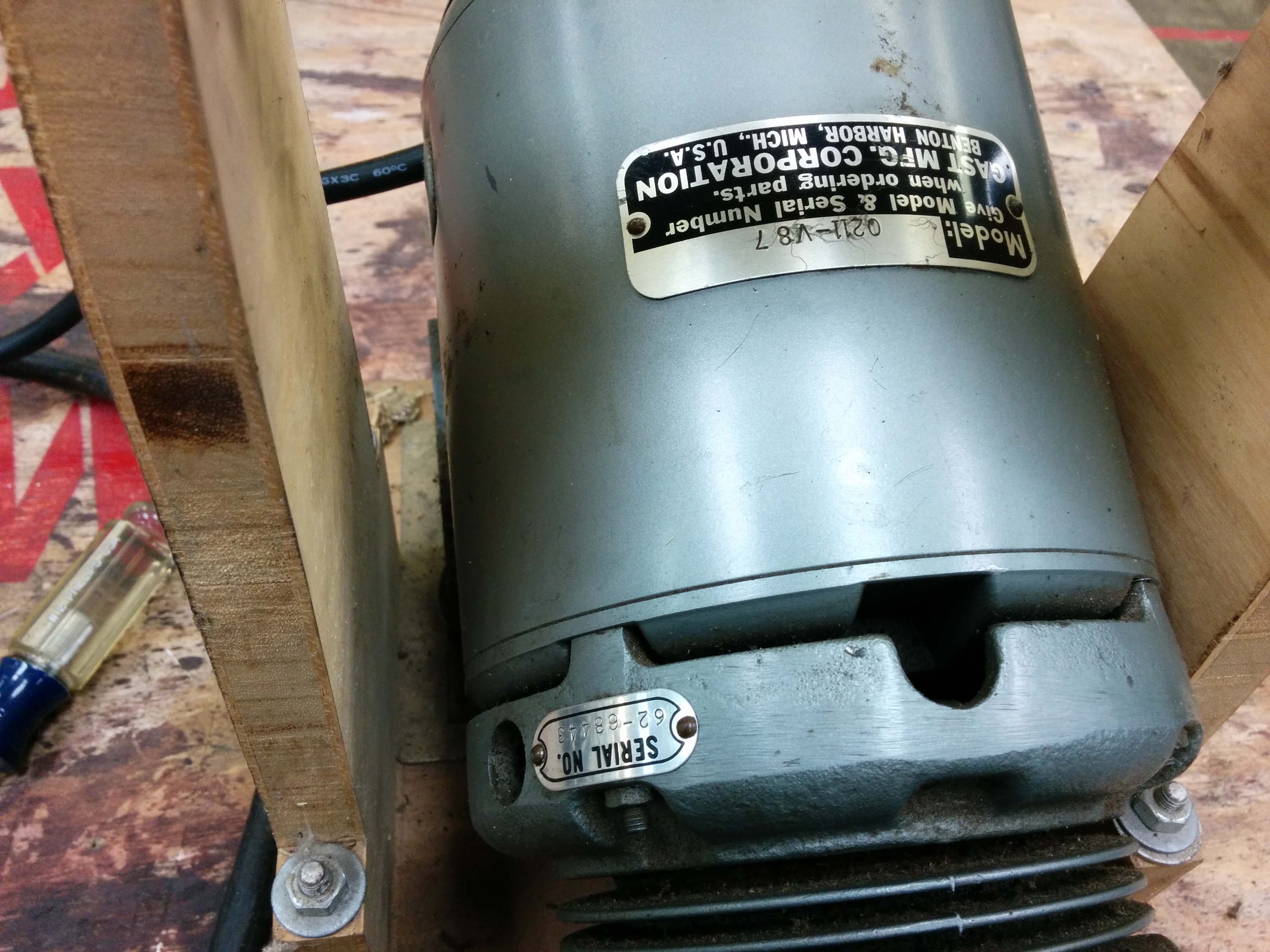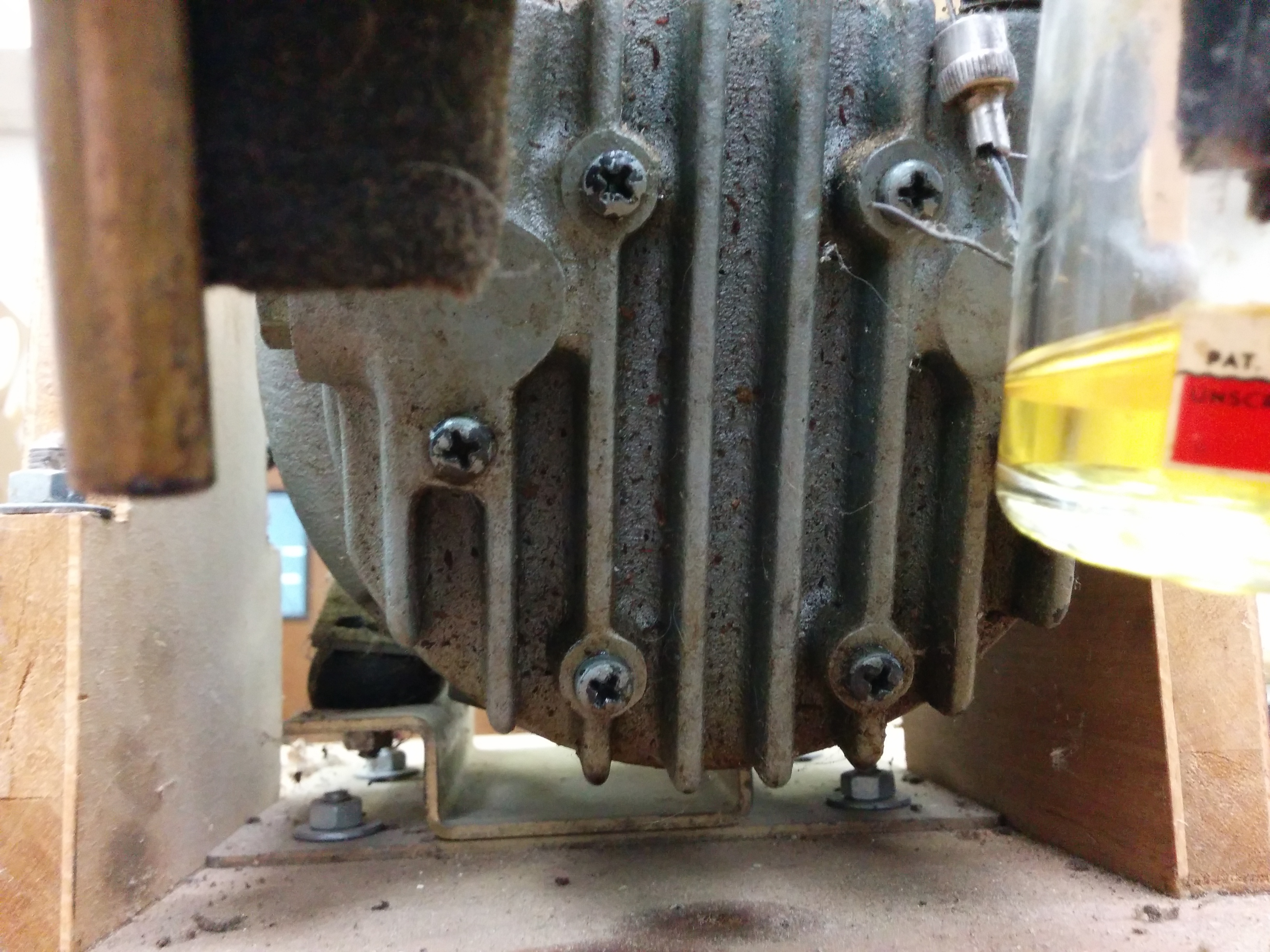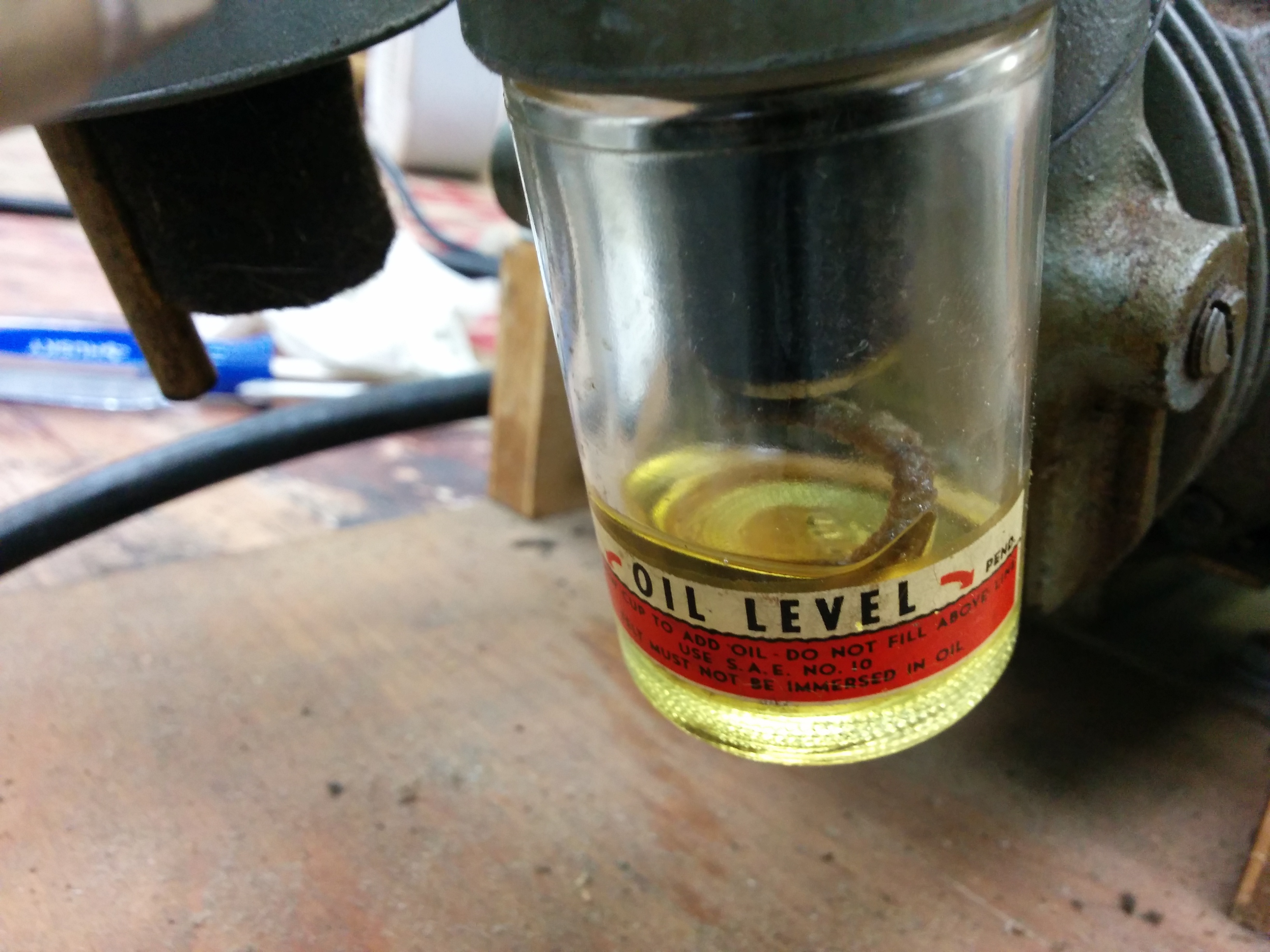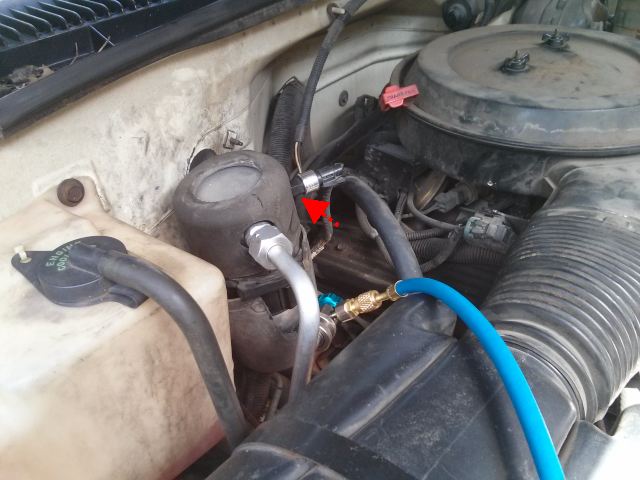I was in last night and here’s what I have to report:
The pump fired up fine and seemed to pull a vacuum. The “U.S. General” manifold set only registered 14 inHg, but I suspect that is an offset error in the gauge set itself. I did not attempt to use the adjusting screw on the face of the low-pressure gauge. The gauge and hoses seemed to hold a vacuum when the manifold and quick-couplers were closed (approx 5 minutes). We also have a Robinair gauge set, but the black vacuum hose from the pump will not fit on the middle connector of that manifold, so I was unable to test with that.
Unfortunately, I must have a leak somewhere in my AC system. It leaks back up to 1atm slowly. This is not surprising, as I had to replace the compressor (after it seized), accumulator, and condenser coils (highly recommended by everyone as they can’t be properly flushed). I suspect I’ve got a leaky joint, even with the new o-rings. My plan is to pressurize the system with dry Argon, since that’s what I have on hand, and use a combination of soapy water and a stethoscope to find the culprit(s).
Two asides: 1) The snap-ring pliers are in the roller cabinet drawer labelled “zombie defense” … an unlikely place for them, and 2) would Paul be ok with adding a standard flare for a r-134a yellow charge/evac cable to the compressor, in place of the existing black hose?
— Zach


